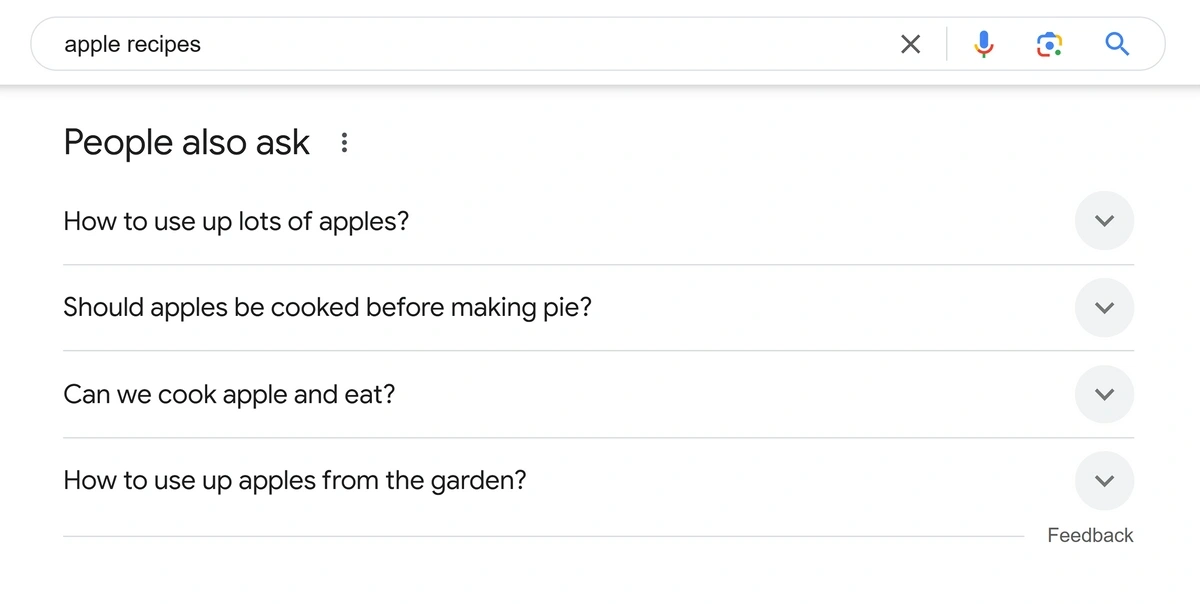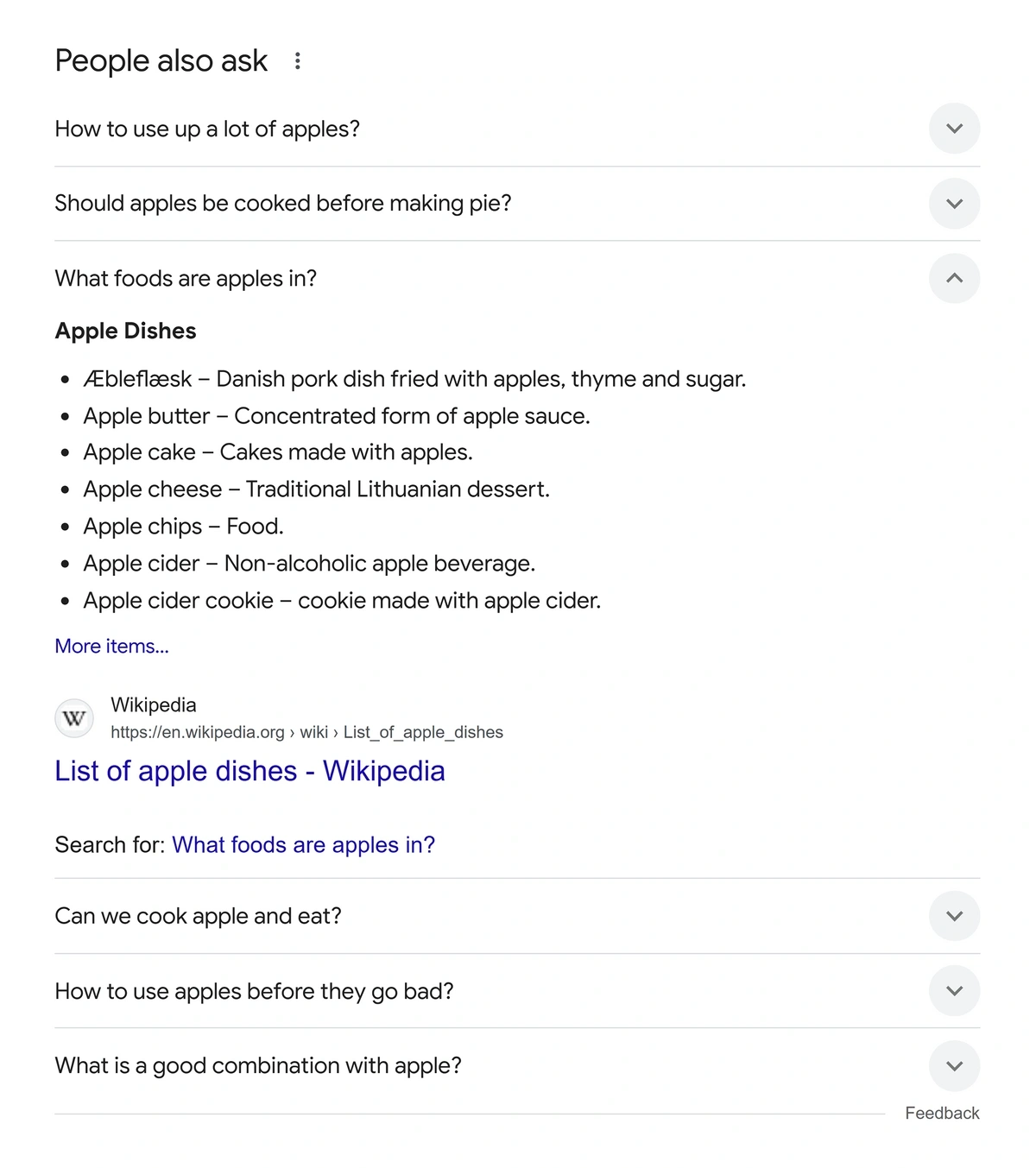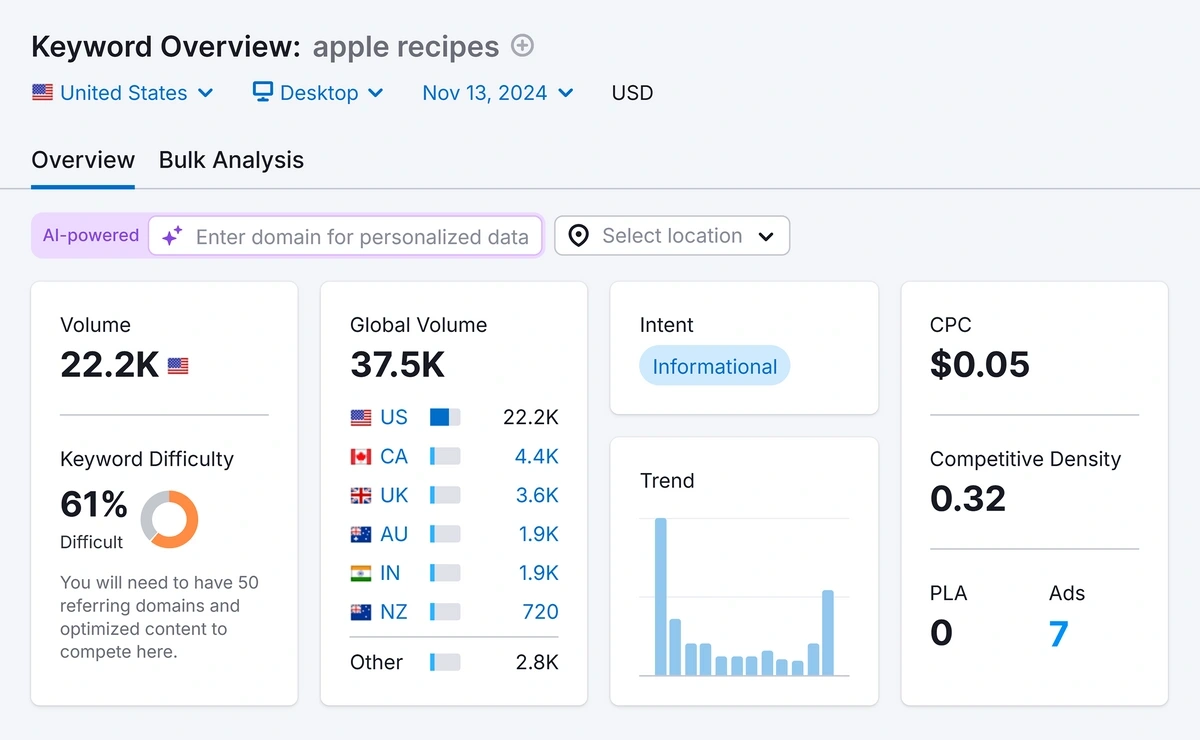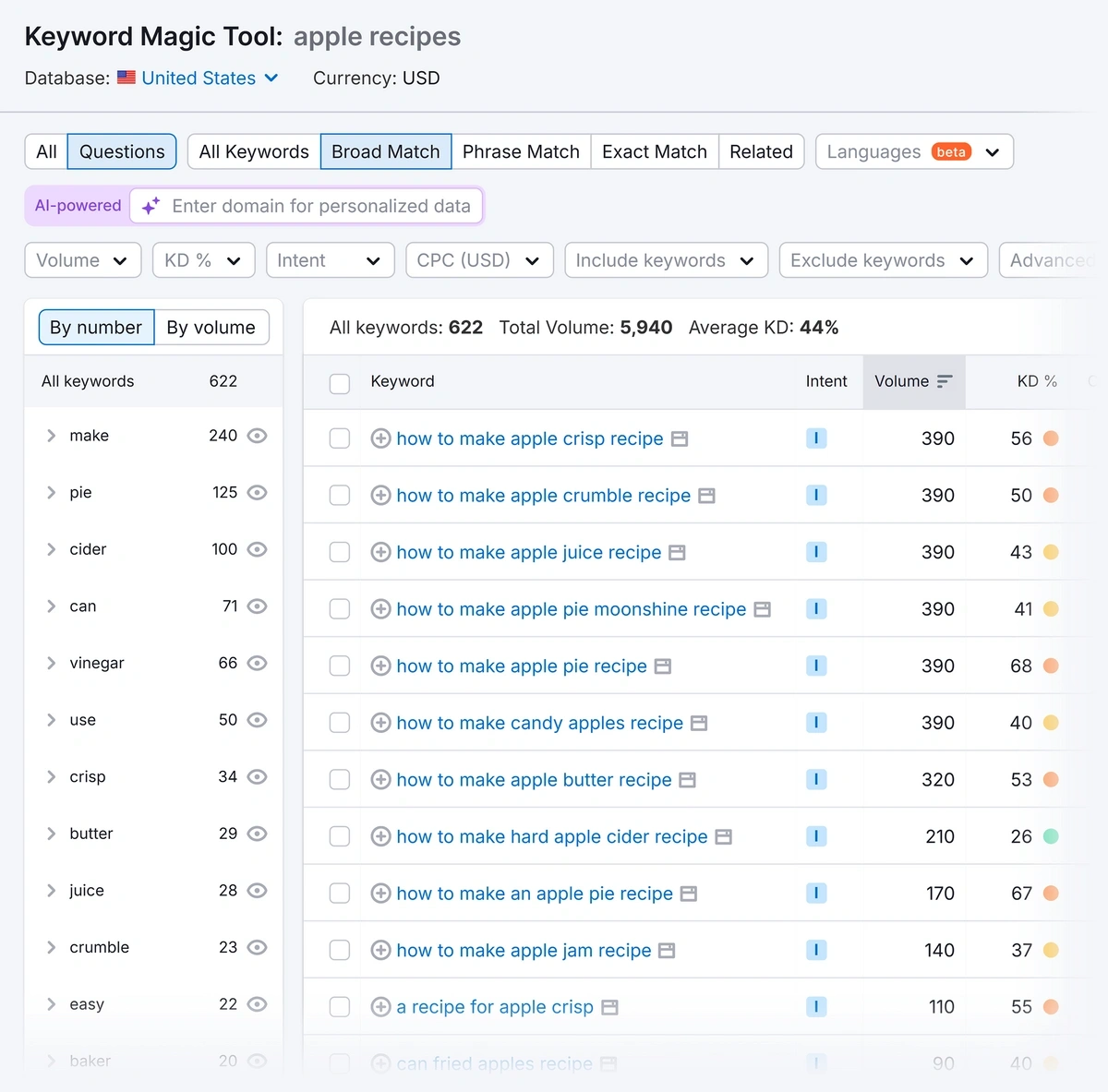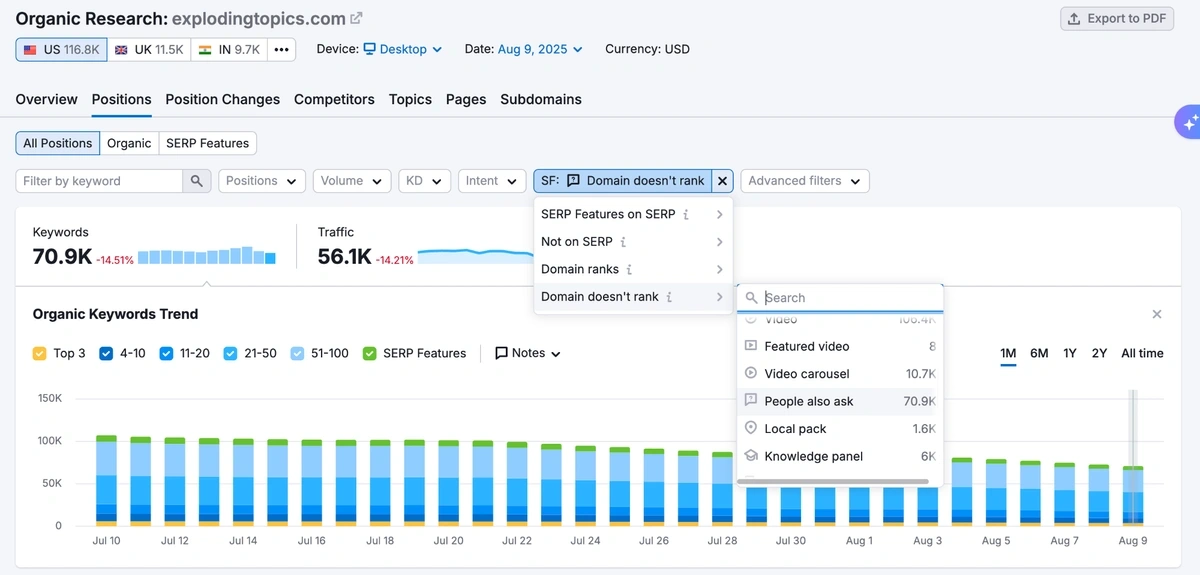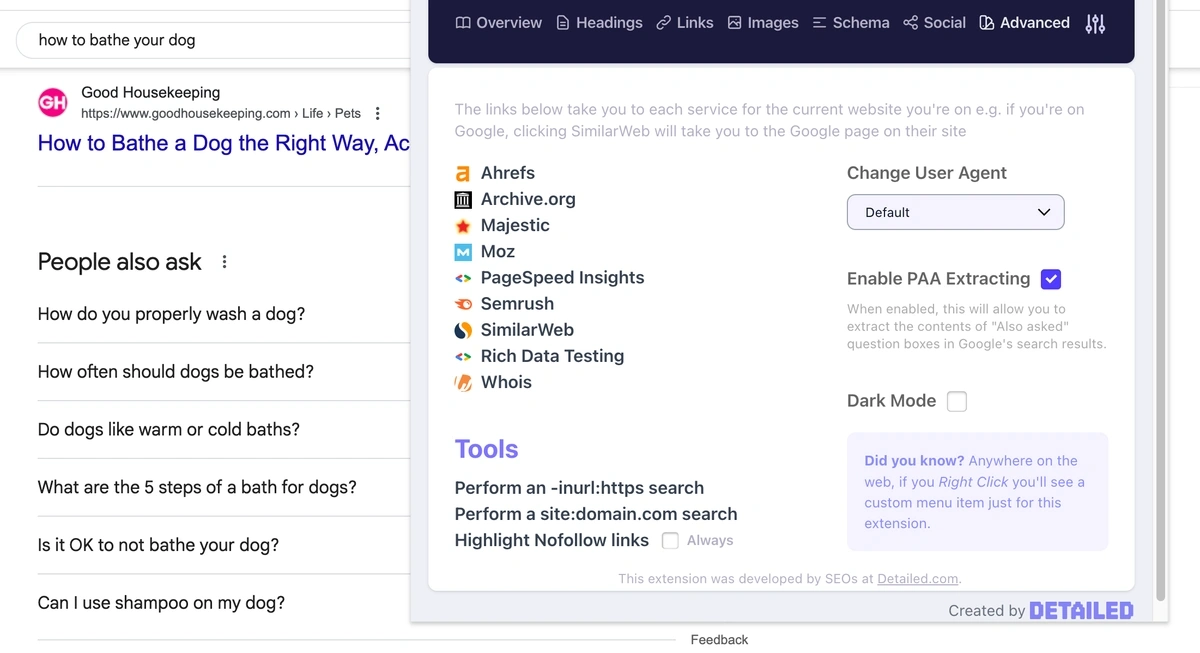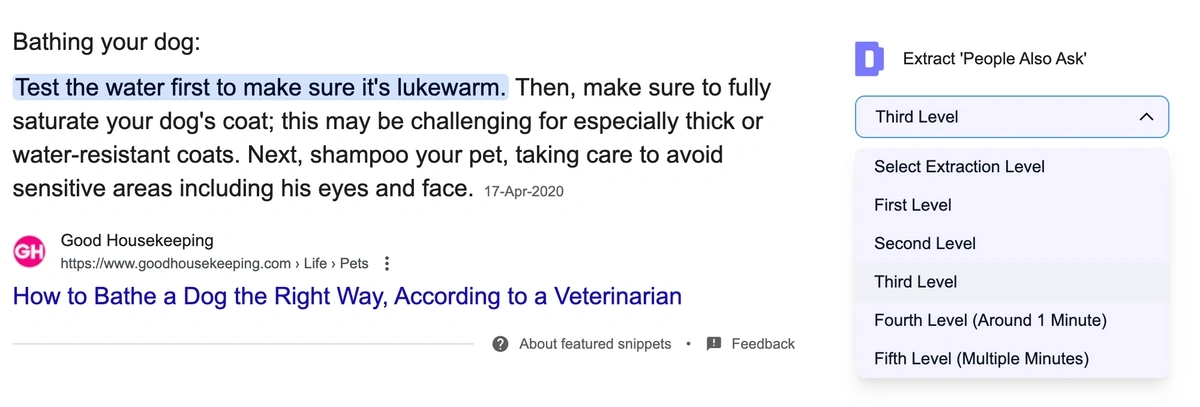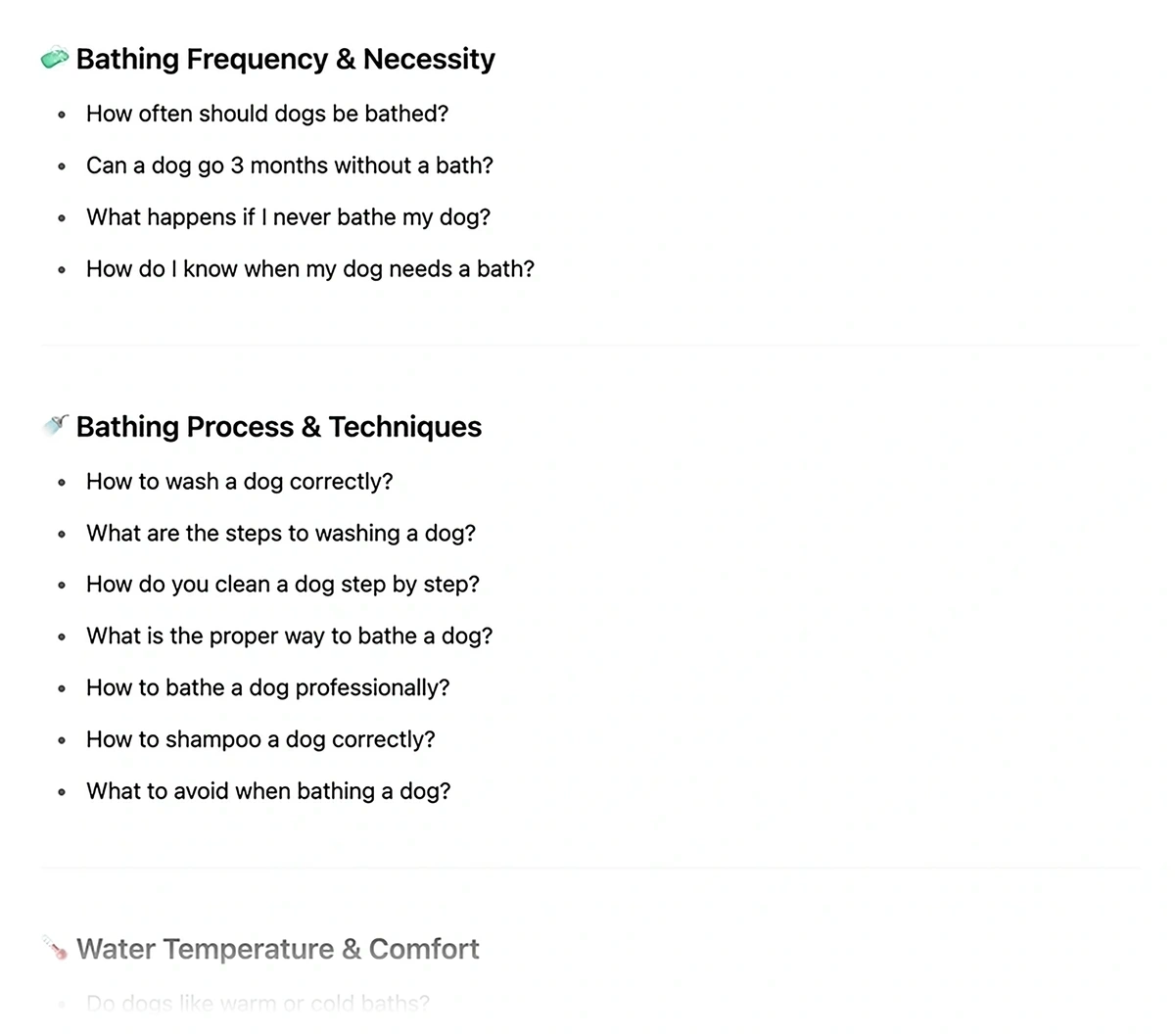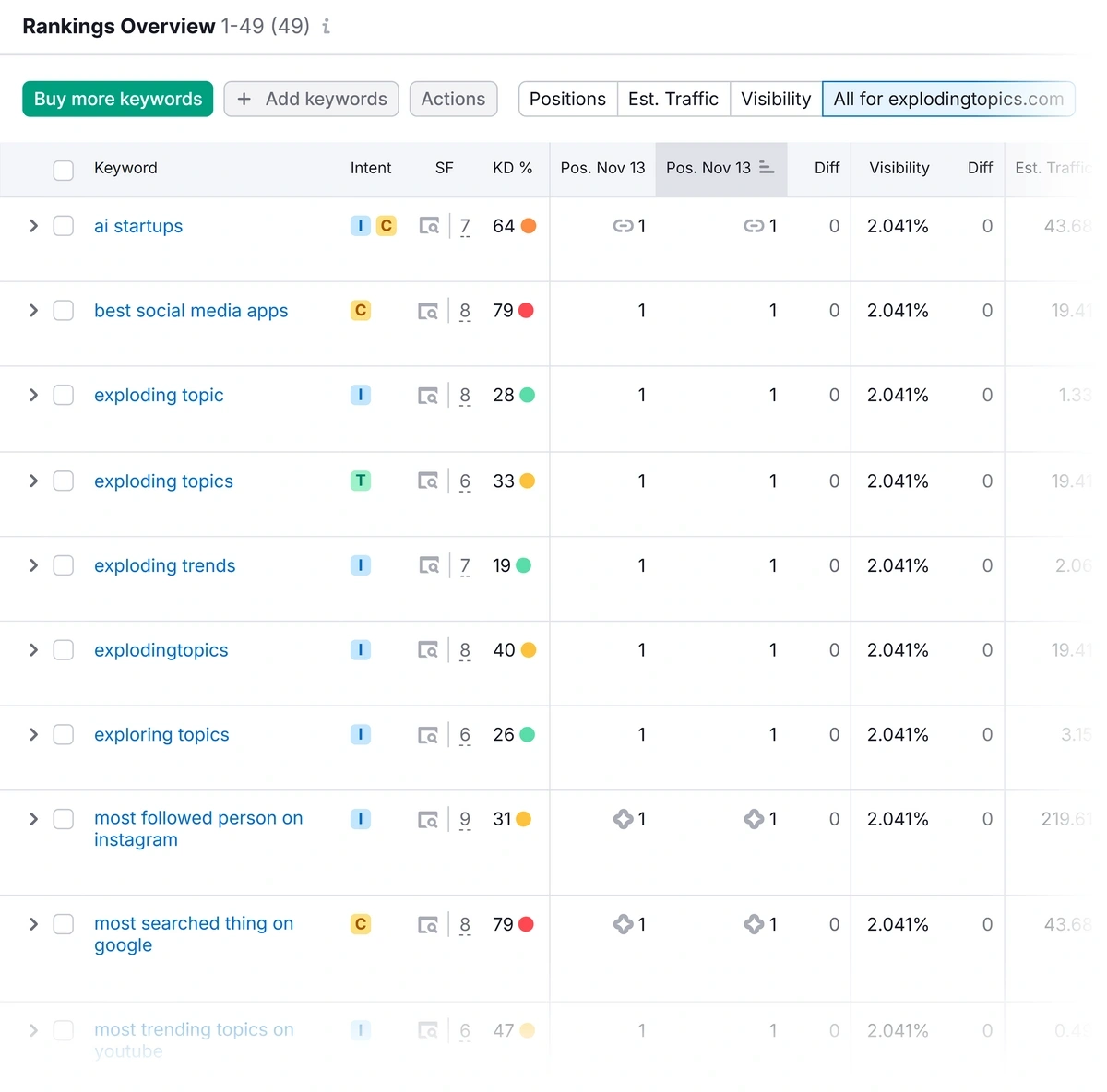
How to Use a People Also Ask Tool to Get More Traffic
You've probably seen expandable question boxes that appear within Google search results. They're known as "People Also Ask" (PAA) boxes.
Ranking in the People Also Ask box is a powerful way to:
- Increase your website's visibility in search
- Attract qualified traffic
- Uncover new keyword opportunities
Here’s how to research relevant PAA questions and include them in your content so that you rank.
The Importance of People Also Ask
PAA boxes showcase the questions users are asking related to a particular search query. They’re a valuable resource for understanding search intent and providing users with the answers they need.
PAA can offer even greater benefits for SEO experts and content creators:
- Discover fresh keywords: The questions in PAA boxes can reveal low-competition keywords and content topics that improve your content’s relevance.
- Improve website visibility: When your content appears in a PAA box, it gains a prominent position in search results. This can increase click-through rates.
- Engage qualified traffic: Users who click PAA questions are often looking for specific answers. They are more likely to engage with your content and convert.
Using PAA to Refresh Content and Anticipate Trends
Refreshing and updating content to align with "People Also Ask" (PAA) trends can significantly boost your content's SEO value and relevance.
For one thing, content that appears in PAA boxes is likely more useful to readers. Content that aligns with trending PAA questions may also draw interested readers who are likely to stay on your site longer.
You can also spot trending topics before they take off and write content to capture the trend.
- Identify Dated Content: Perform a content audit to find posts with lower traffic or rankings that could be improved with fresh insights.
- Add PAA Questions: Include relevant PAA questions about the trend as new sections within existing content, using subheaders to address each question clearly.
- Update Data and Examples: Research the latest statistics, case studies, or examples to improve relevance and signal freshness.
- Monitor Keyword Trends: Seasonal trends can help you plan content updates to align with high-interest periods for particular PAA questions, ensuring your content remains relevant.
Get More Search Traffic
Use trending keywords to create content your audience craves.
How to Optimize People Also Ask Answers
How can you get the best results with PAA boxes? Here's a breakdown of proven optimization techniques.
1. Directly Answer User Questions
Start your content by answering the question with a concise summary. Usually, 2-3 sentences is sufficient.
Make sure the summary is:
- Active – Avoid passive voice.
- Direct – Don’t beat around the bush.
- Clear – Leave jargon and technobabble for others.
Google prefers plain, accurate descriptions. The more people who can understand your answer, the more likely it is to appear in PAA.
2. Embrace List Formats
Bulleted and numbered lists are more digestible for users. They’re also easier for Google to understand and display.
Whenever you can format a PAA answer as a list, you should do so. Make sure each item is short enough to display nicely, especially on mobile screens.
3. Use Questions as Subheadings
Crafting subheadings (H2, H3, H4, etc.) as questions emphasizes your focus on answering that specific question. It also makes your content easier for users to navigate.
Google may turn well-formatted subheadings into a list in the People Also Ask feature.
4. Embrace Visuals
Images are a powerful tool for engagement. Use descriptive file names, alt text, and captions to optimize your images for search.
Images don’t only make your content more visually appealing. They can also be included in PAA answers to catch the eye of potential visitors.
Tracking PAA Questions in Semrush
Having a tool to help you track PAA questions is essential. Semrush helps you uncover PAA keyword ideas and align your content with user search intent.
Follow these steps to quickly gather PAA questions related to your target keywords.
1. Start with Keyword Research
Navigate to the Keyword Overview Tool.
- In Semrush, go to Keyword Overview under the "Keyword Research" section.
- Enter your primary keyword into the search box.
Semrush will display data on search volume, difficulty, and keyword intent.
2. Explore PAA Questions with the “Questions” Filter
Click on the Keyword Magic Tool. This tool generates a comprehensive list of keyword ideas based on your primary keyword.
- Select the “Questions” tab to display keywords in question form, which often reflect common PAA questions.
- Review suggested questions.
Pull out PAA-style questions that align with your main topic. The questions will cover a range of user intents, from informational queries to transactional ones.
3. Filter for Keywords Not Yet in the PAA Box
Many keywords present great PAA opportunities.
It's just a matter of identifying the keywords that you're within striking distance of claiming a PAA box for but haven't already done so.
You can make easy work of finding PAA opportunities for your domain by using the Semrush Organic Research feature.
Enter your domain name in the field and press "Search".
In the Positions tab:
- Open the SERP Features dropdown menu.
- Select “Domain doesn’t rank.”
- Choose “People Also Ask.”
This filter will display keywords for which your domain appears in regular search results but not in PAA boxes.
Now you have ideas for questions you could answer to gain PAA visibility:
- Review metrics such as search volume and keyword difficulty to find low-competition, high-interest questions.
- Focus on keywords with moderate to high search volume that align closely with your target audience's interests.
I recommend compiling a list of relevant questions and adding them in suitably worded subheaders in your content to target PAA opportunities.
4. Find Topic Ideas With PAA
PAA data is an excellent source of topic research.
Analyzing PAA boxes for a given query can help you draft a more comprehensive outline for your target keyword that addresses key questions.
In addition, you might discover ideas for entirely new content ideas that might be better served with a dedicated blog post of their own.
Here's how:
Install the Detailed SEO Extension in your Chrome browser.
After installation, click on the "Advanced" tab. You need to click the checkbox next to "Enable PAA Extracting" here.
With that, enter your keyword into Google. You'll see a "Extract People Also Ask'" option appear on the search results page now.
Click on the dropdown to select how deep you want to dig into the many PAA layers available on SERP.
(As you know, every PAA box expanded produces a set of extra related questions, revealing multiple nested layers depending on how many you click).
You can select the First Level in the dropdown if you just want to extract the first visible layer of questions only.
For best results, I find that it helps to have a larger set of data so you have more ideas to work with for your existing as well as new content.
Third Level extraction is a sweet spot that I usually use (this will extract PAA questions up to 3 layers deep).
As you make your selection in the dropdown, the extension will export a spreadsheet containing PAA questions up to your required level of layers.
At this point, you can enlist the help of ChatGPT to analyze this data and find topics to either enrich your existing content or create new posts around.
Just attach your spreadsheet with your prompt and ask ChatGPT to group these PAA questions into distinct topic themes.
This will help you eliminate redundant questions and help you see things in terms of topics rather than just individual questions to answer.
Cross-reference the themes ChatGPT gives you with your published content. For topic themes that you've already covered, you can expand the content by addressing the newly identified questions.
And you can generate completely new content out of question themes that are complex enough to warrant their own dedicated pages and which you haven't yet covered.
5. Track PAA Performance Over Time
You can monitor your website’s ranking for PAA-related keywords and questions in Semrush’s Position Tracking tool.
You can also set up alerts to track when new PAA questions appear for your target keywords.
Become a People Also Ask Expert with Semrush
Semrush provides all the insights you need to improve your search rankings and drive traffic. Sign up now to access essential features like Organic Research, Position Tracking, and the Keyword Magic Tool.
Stop Guessing, Start Growing 🚀
Use real-time topic data to create content that resonates and brings results.
Exploding Topics is owned by Semrush. Our mission is to provide accurate data and expert insights on emerging trends. Unless otherwise noted, this page’s content was written by either an employee or a paid contractor of Semrush Inc.
Share
Newsletter Signup
By clicking “Subscribe” you agree to Semrush Privacy Policy and consent to Semrush using your contact data for newsletter purposes
Written By


Josh is the Co-Founder and CTO of Exploding Topics. Josh has led Exploding Topics product development from the first line of co... Read more

